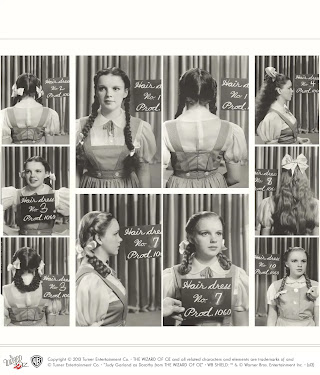Many people remember Bing Crosby as the famous singer but I'm going to read you a few excerpts from the piece about Bing and then we're going to talk about an 'In Terrorem Clause' being included in his will.
So Bing Crosby, they say had a melodious singing voice in easy-going manner that made him one of America's most beloved entertainers for over five decades. He was named Harry Lillis Crosby at his birth in Tacoma, Washington. Married a couple of times and then in June 1977, he formed a will which describes his family as follows, I am married to Kathryn Grant Crosby who in this will is referred to my wife. I have the following children and it goes on to list seven children. In the will, he made several cash requests and three charities in Spokane, Washington where Crosby had studied law at Gonzaga University before dropping out to pursue his interest in music.
Bing made some cash gifts to his wife, $150,000, Kathryn Grant Crosby, his niece Carolyn Miller, $15,000. and then to St. Aloysius Church, $5,000, Spokane, Washington, Gonzaga University $50,000, Gonzaga High School, $50,000. In addition, he gave all of his personal property to his wife, if she survived. If she did not survive him to his residuary estate and again, the residuary estate is what we refer to as the part of your estate, whatever is left over is included in the residual. According to his will, Crosby's residuary estate is given to the Harry L Crosby Trust which he established on the same day he signed his will and again, Harry is Bing Crosby's birth name - Harry Lillis Crosby and this is very smart, he set up a trust plan to, for private administration of his estate because one thing you often see with celebrities, as soon as they die, the newspaper will run down to the courthouse and get a copy of the will and immediately publish the content. So if you're planning to leave your assets through a will, be aware it becomes immediately public following your death and if you're a well-known individual like in this book, the rich and famous, it's almost guaranteed the newspapers are going to get a copy that will and publish it and it will provide endless tabloid fodder after a celebrity's death. That's why, many of the celebrities use a trust to keep all that information private after death including how much they were actually worth and things like that because creditors also come out of the woodwork as soon as that will with, if they used a will, those large amounts are published.

So he left the residuary estate to the Harry L. Crosby Trust which he established on the same day he signed his will which is very common, when I'm doing a revocable trust plan, we will establish the trust and sign a 'Pour Over Will' which is what it sounds like he had here, on the same date. The provisions of that trust are private but the author of this book says, "but it is very telling that the publicly easy going Bing included a very comprehensive In Terrorem Clause in his will that refers to Crosby's children as follows:
Provision against contest - Except as otherwise provided in this will, in the trust referred to in clause 8, I have intentionally and with full knowledge, omitted to provide for my heirs and I have specifically failed to provide for any child of mine whether mentioned in this will, in said trust or otherwise. Finally, so that's what I wanted to bring out of Bing's will today, is this concept of an In Terrorem Clause, you may have heard that term, you may have not. It's Latin and it means 'fear' in Latin and you can use them in different things, you can use In Terrorem in a demand letter and it's basically a threat of legal action but this is the way Law.com defines it, I've thought sort of a user-friendly definition: In Terrorem from Latin for in fear, a provision in a will which threatens that if anyone challenges the legality of the will or any part of it, then that person will be cut off or given only a dollar, instead of getting the full gift provided in the will. The clause is intended to discourage beneficiaries from causing a legal ruckus after the will writer, the person who made the will is gone.

So the In Terrorem Clause is designed to discourage someone from disrupting your carefully laid out legal wishes and I have included them in estate plans, I draft wills and trust and if the person I'm working with wants it, I think it's a good idea. Now as this points out, it works with Bing, let's say with his children, what it is designed to do would be discourage them from feuding let's say, with the other children. I don't know what his trust said because it was private but let's assume he left equally among the children. Well if there were seven children or partial to the wife and the children but let's say, the children were going to get 10% each. I'm not sure but if they challenge the will, they could get nothing at all. So they have something to lose, the In Terrorem Clause, if they challenge the will, they could potentially lose their entire inheritance which I'm guessing and I know Bing Crosby did very well, so it was likely millions of dollars...




.jpg)
.jpg)















